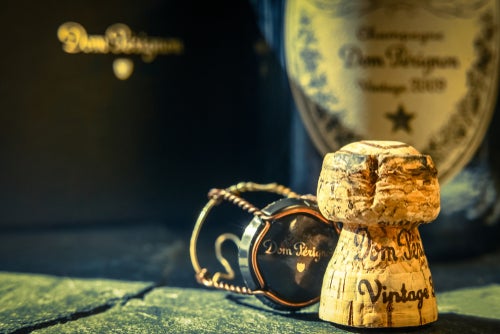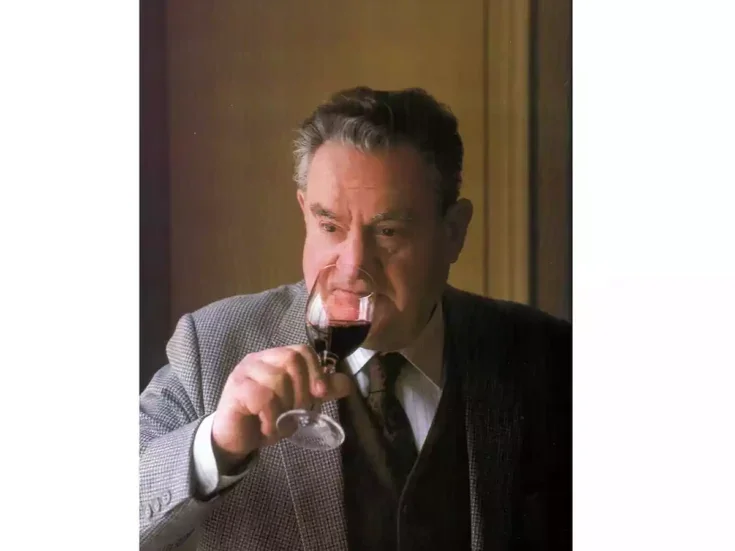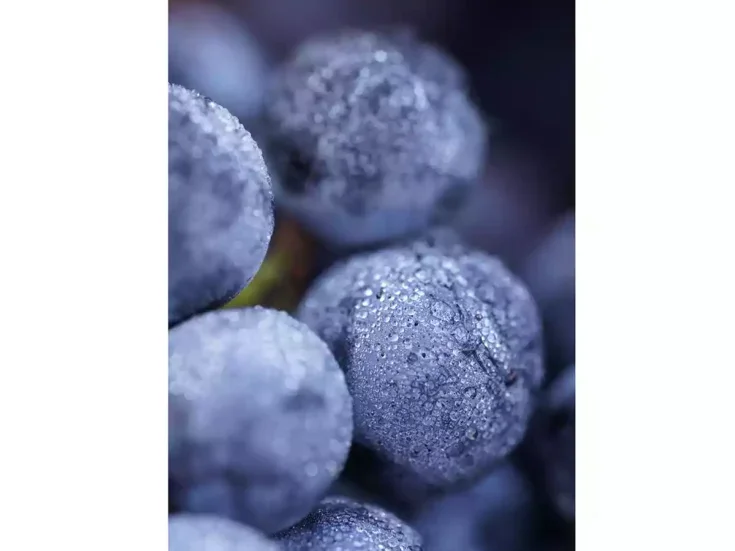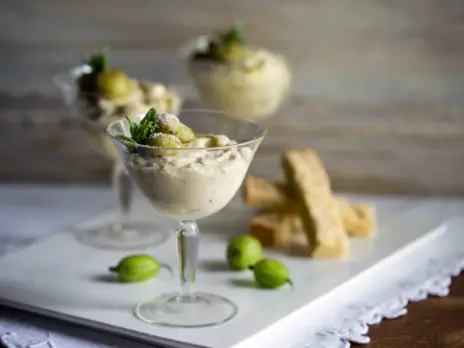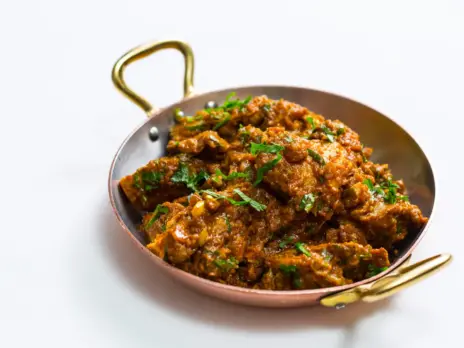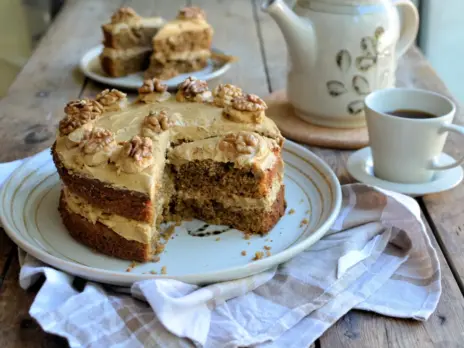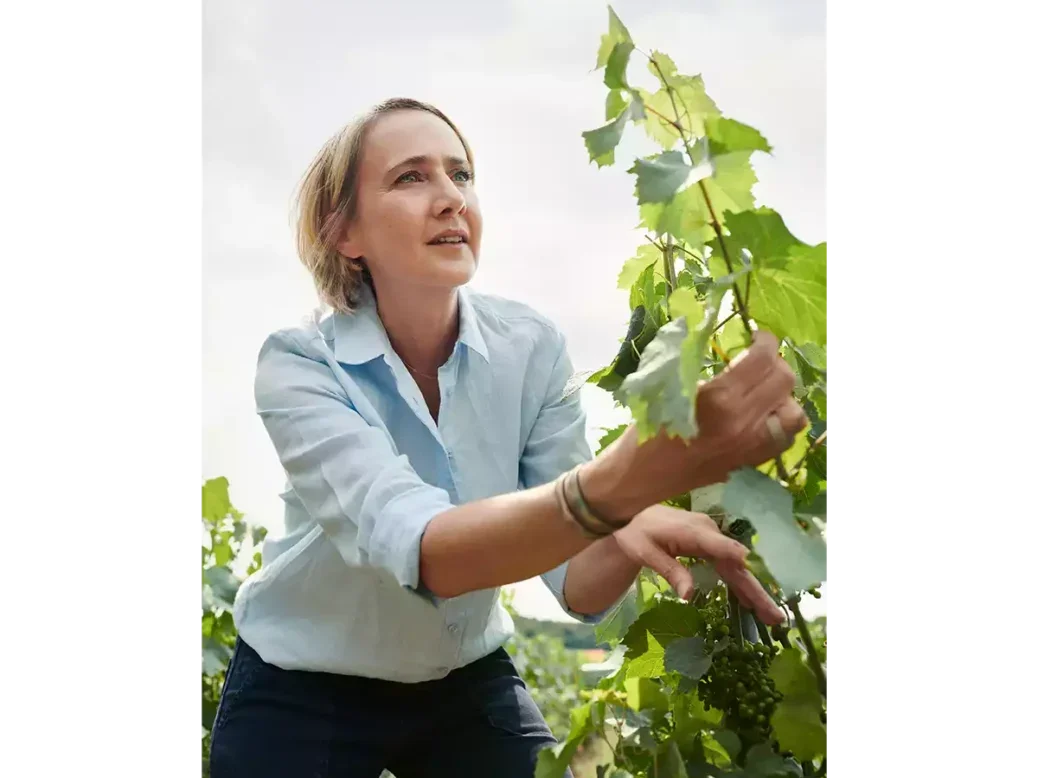
Anne Krebiehl MW joins the Krug team for a detailed look at the making of the house’s single-vineyard Chardonnay, Clos du Mesnil, and distinctive Multi-Vintage blends.
Show, don’t tell” is the maxim employed by artists to draw in their audience. Krug is using it, too, to great effect. Each year in spring, select international guests are treated to a “behind the scenes” visit chez Krug to spend time with chef de cave Julie Cavil, Olivier Krug, and the rest of the winemaking team. Vineyard visits and tastings of vins clairs offer real insight into the craftsmanship behind the wines. They illustrate the work that goes into marshaling the vast range of each year’s new base wines, alongside an equally vast library of reserve wines, into an annual blend of the famously generous and savory Grande Cuvée and Grande Cuvée Rosé.
On this visit, however, Cavil and her team demonstrated that Krug’s approach to vinifying plot by plot and assessing each individual wine several times in blind tastings also applies to its most coveted wine—its Blanc de Blancs from Clos du Mesnil. Yes, even this enclosed, small 1.84ha (4.55-acre) site is divided into individual plots that are harvested and vinified separately. Depending on the year and yield, between four and six separate wines are picked in the clos and vinified right there in the adjoining building, complete with Coquard press and a winery stocked with barrels and small stainless-steel tanks.
Freshness like a laser
Brilliant spring sunshine and brisk cold marked our early-morning visit to this vineyard in the center of Le Mesnil-
sur-Oger, almost an hour’s drive south from Reims, where Cavil and her fellow enologists, Jerôme Jacoillot and Isabelle Bui, awaited us. Happily, sunglasses were as de rigueur as thick scarves. Cavil explained that picking dates are determined by taste alone, not by analytics. Jacoillot noted that the team drives almost 2,500 miles (4,000km) every harvest, visiting each of the sites owned by Krug and its grower partners to taste grapes and decide harvest points plot by plot. The desired taste profile for Chardonnay, Jacoillot said, is “citrus aromas—lemon or grapefruit. It has to be fresh, not juicy like a peach. We are looking for freshness like a laser.” Hitting and not missing this aromatic stage, which can be a matter of 24 hours, is key. But since part of the vineyard is in the cold shade of trees and walls while other vines already bask in brightest sunlight, it is clear that ripening, even within this clos, is not homogenous. There are other differences, too: The depth of topsoil ranges from 8 to 16in (20–40cm), while different parcels of vines were planted in the early 1970s, the mid-1980s, 1993, 2004, 2008, 2012, and most recently in 2016.
Striking differences
Cavil explained that the pickers of Clos du Mesnil are local: “They all live close by; we can call them to pick, and they can come back two or three days later if needed. We have the agility to be in the right place at the right time,” she said, emphasizing that it is ripeness rather than logistics that drive the decision-making process. In situ, in three different parts of the clos, we got to taste three of the four different wines produced from Clos du Mesnil in 2024. The first wine, from a parcel planted in 2008 and picked on September 21, 2024, showed as much brightness as ripeness. Excellent tension defined the mid-palate, but the taste dropped off quickly. Jacoillot noted that while this was excellent blending material, “something is missing.” The next base wine, picked from a parcel planted in 1972, revealed a pure lemony streak, exquisite zestiness, and lasting length. Texturally, it was different from the first, not as rounded, but with gorgeous citrus aromatics and energy. The third base wine we tasted was from the youngest plot of the clos, planted in 2016, picked three days after the 1972 plot. Slightly smoky reduction hovered on the nose, while the body of the wine was exquisitely light-footed, juicy, and delicate. Mission accomplished: It was clear that even this single site yielded wines of strikingly different character. “You have to taste it to believe it,” as Cavil said.
Purity, precision, elegance
When blending Clos du Mesnil, should the team decide to bottle a wine from the site in any particular year, the key attributes are “precision, purity, and elegance,” Bui explained. “If there is any hint of heaviness—no,” she said emphatically. We then appreciated that delicious early-morning glass of golden and smooth Clos du Mesnil 2009 even more. And no, I did not spit but rather savored the length of the wine. The release of the wine is another matter of tasting, and Bui conceded that it has happened that a blend was not deemed good enough, even after aging, to be released as a single-site wine. The bottles are then disgorged in a remise en cercle to form part of the reserve library—which is the perfect segue into talk of the blending of the Grande Cuvée and the Grande Cuvée Rosé.
Tasting and transmission
At a long table inside the small Mesnil winery, against a backdrop of stacked barrels, our tasting continued with base wines from the 2024 vintage. Bui noted that the tasting committee spends five to six months of the year systematically tasting all the wines. From mid-October onward, all the newly vinified wines—somewhere between 250 and 400—are tasted blind, with the assessments of each taster recorded. At this stage, however, stressed Bui, no decisions or categorizations are made. Then the entire library of reserve wines is tasted and assessed, and Cavil gives “some orientations” on the reserve wines. The new wines are then tasted again after racking, and Cavil “locks herself away” to “propose different blends.” These are made up and tasted. “We agree by a simple show of hands,” said Bui about this decision-making process of the tasting committee, which still includes former cellar master Eric Lebel, because “the notion of transmission is really important for us.” Both Bui and Cavil emphasized that the tasting of the wines is blind, to enable everyone to taste without preconceived ideas, so that each wine’s “individuality” can be determined. Cavil added that each wine can bring different and valuable elements to the blend. “Even if a wine has a weak structure, it may add incredible aromatics,” she said.
The 2024 vintage
We tasted four Chardonnay base wines—from Avize in the Côte des Blancs, Vaudemange in the Montagne de Reims, Montgenost in the Sézannais, and from the Vitryat—which were marked, respectively, by elegant length, concentrated tension, creaminess, and juiciness. These were followed by four Pinot Noirs from Sacy, Verzy, Bouzy, and Les Riceys, which in turn were aromatic, red-fruited and pithy, lifted with citrus, and creamily smooth. Two Pinot Meuniers followed, from Pargny-lès-Reims and Ville-Dommange, one smooth and smoky, the other smoky and juicy. The wines from 2024—a challenging growing season that was pummeled by both downy and powdery mildew—were surprisingly smooth, ripe, and balanced. “Chardonnays were the winner in 2024,” said Cavil. “They usually are in better shape in difficult years. For Pinot Noir and Pinot Meunier, 2024 was more complex. Pinot Noir did well compared to Pinot Meunier, but it was difficult to reach maturity. Sometimes we had to make hard decisions between the health of the grapes and their maturity.” This meant that they picked fruit before optimum ripeness to save it from rot. Cavil said that some lots were chaptalized. She also noted, however, that in Krug’s collective 2024 tasting notes, “seven of the top ten wines were Pinot Noirs.” This really is the verdict of the vintage. While yields were small and harvesting had to be selective, what was picked was of the most promising quality. Again referring to the detailed records made of each wine, Cavil said that in terms of average scores, “2024 was the third best of the past decade, following 2018 and 2019—all very expressive wines, fresh but without overripeness.” She added that “the only challenge we had was with Pinot Noir and Pinot Meunier, which sometimes had to be picked before perfect maturity.”
Reserves…
This was when the reserve library came into play—and we got to taste three stunning wines kept, as all reserves are, in stainless steel. The first was a 2018 Pinot Meunier from Ste-Gemme, smolderingly long and waxy. This was followed by a 2012 Pinot Noir from Verzenay, as silky as it was peachy, and a gloriously bright and intense 2008 Chardonnay from Avize. The personalities of these wines were striking, and we tasted the finalized blends—before the tirage in late May—of what will, respectively, become the 180th and 36th Editions of Grande Cuvée and Grande Cuvée Rosé, which will be disgorged in seven years’ time. The 180th Grande Cuvée is made from as many as 180 different wines from 13 different vintages, with the oldest a 2006 Chardonnay from Cramant, and a grand total of 44% of reserve wines. It already shows its characteristic saltiness. Its rosé counterpart, always a smaller production—“always the most difficult to make,” as Cavil said—is made from 41 different wines across six vintages, with that gorgeous 2018 Pinot Meunier from Ste-Gemme forming part of it. Right then, it was still bright pink, in the magenta spectrum, and slightly smoky.
… and results
Back at the maison in Reims, we tasted the newly released 173rd and 29th Editions of the wines, based around the 2017 vintage—“one of the harvests we all remember for its impressive attack of rot,” as Cavil bluntly put it. The year was also hit by frost and a summer that saw “the equivalent of six months’ rain in just three,” with rot, especially acetic rot, developing in July. Cavil noted that, once again, the challenge was the red varieties. She described the aromas in the tasting room as “rustic and discreet,” with wines of “light structure and issues with elegance.” It was another year to delve into the reserves, where “lots of 2014 Chardonnay provided elegance and Pinot Noirs from Les Riceys added strong aromatic personality.” The wines, youthful now, bear the undeniable savor of Krug, making the same point in the glass that Cavil and her team had already demonstrated in the vineyard and tasting room—namely, the art of blending: the diversity of Champagne’s vineyards and villages across numerous vintages, with the added and magical benefit of time.
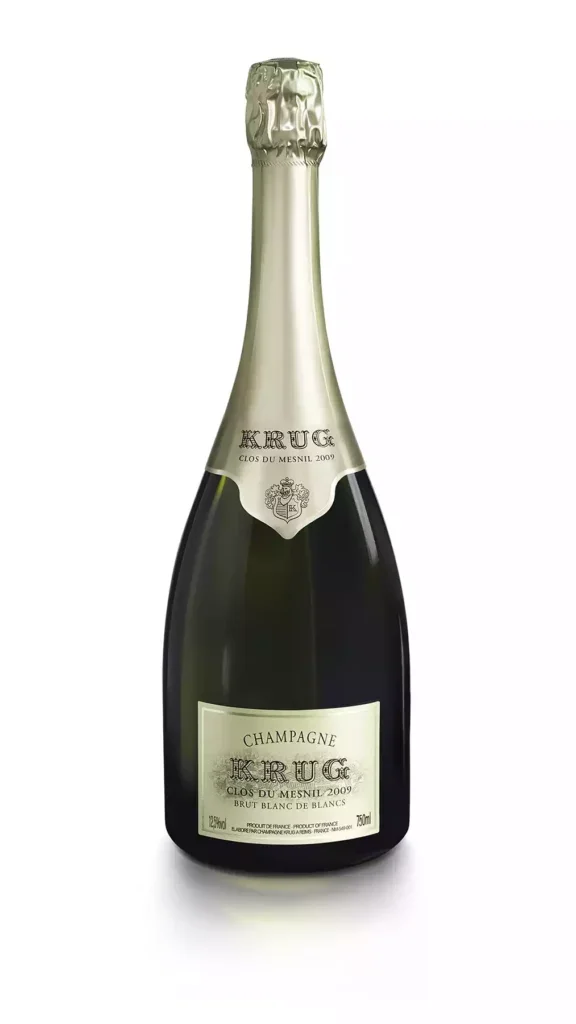
Tasting
Krug 2009 Clos du Mesnil Blanc de Blancs Brut (Krug ID 124001)
Supple creaminess of smooth cornmeal is fused with lemon and chalk on the nose. A fine mousse and concentration inform the agility of the palate, which moves with creamy ease to shimmer with confit lemon, always with that polenta smoothness. The mid-palate holds ripeness, expressed as lemon oil. This fills the mouth with its generosity and yet is all tension and tone, sunny and taut at the same time, with an exquisitely detailed mousse. Elongated and rich, this leaves a seamless expression of lemony cornmeal smoothness, a profound sense of chalkiness and of unperturbable, luminous, ripe freshness. | 98
Krug Grande Cuvée 173ème Edition Brut (Krug ID 124003)
Made from 150 wines across 13 vintages (with 2001 the oldest) and 31% reserve wines; 34% Chardonnay, 44% Pinot Noir, 22% Pinot Meunier; disgorged in the first trimester of 2024.
With initial reduction and a sense of salty polenta and lichen, the wine is slow to emerge but opens up remarkably over the next 15 minutes. The lively mousse has an almost sprightly energy, emerging from a well of freshness. The wine seems to dance on lighter feet than usual, but with vivid energy, spreading a sense of salty, gentle, creamy polenta and incipient umami savoriness. The aromatic development is arresting, opening into layers of golden, yellow, and green citrus, with a touch of white pepper. | 94
Krug Grande Cuvée Rosé 29ème Edition Brut (Krug ID 124021)
Made from 29 wines across five vintages (with 2010 the oldest) and 33% reserve wines; 34% Chardonnay, 44% Pinot Noir, 22% Pinot Meunier; 11% of the blend was added as red Pinot Noir from the plots of La Côte Valnon in Aÿ and Les Crayons in Mutigny; disgorged in the first trimester of 2024.
With a hue between salmon and onion pink, this opens with cream, toasted white bread, and overtones that shimmer with tart hedgerow fruit and an occasional flicker of menthol. The palate is more slender than expected, with beautiful precision, vibrant concentration, and bright freshness at its core. Aromatically, there is something tender and delicate, shimmering like tangerine peel, crushed yarrow, and salted orange flesh. This definitely needs time but is full of delicious promise. | 95

